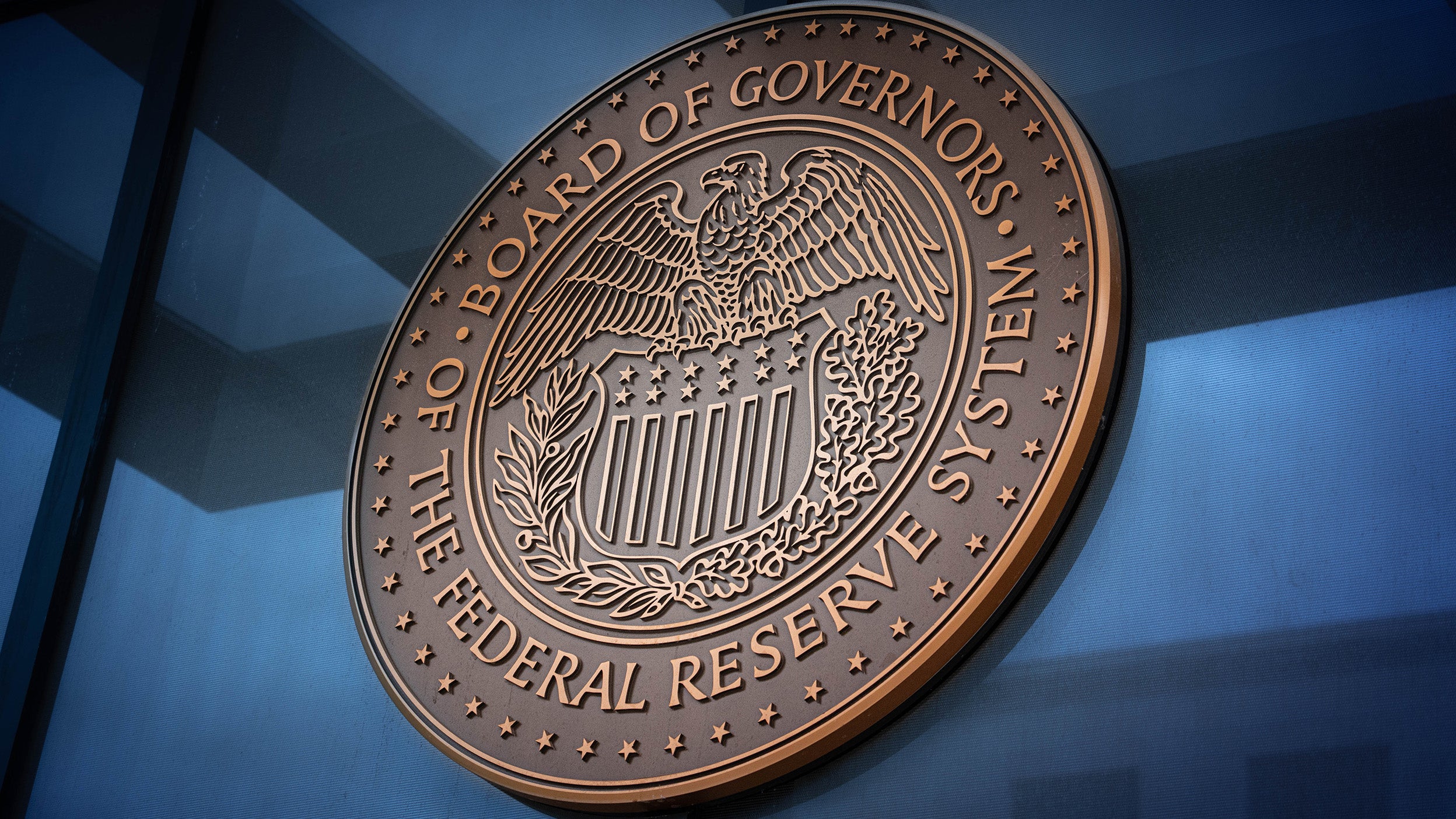
Markets and Economy Navigating Fed monetary policy uncertainty and the markets
A rate cut, which markets are pricing in despite Fed member differences, and an expected improving economy in 2026, could support stocks.

US stocks pulled back as the Trump administration issued fresh tariff threats on China and federal layoffs began.
As government data is delayed, other sources suggest that US inflation remains above target, but is not accelerating.
The UK eased regulations, allowing retail investors to hold crypto ETFs in Individual Savings Accounts and pensions.
Investors may have been wondering just how much more could be thrown at the US stock market before its advance was disrupted. This week alone, stocks brushed aside an ongoing government shutdown, the absence of the September payrolls report, and soft readings across manufacturing, services, and housing.1 Yet it appears that a canceled meeting between US President Donald Trump and Chinese President Xi Jinping, paired with fresh Trump administration tariff threats over China’s “hostile” behavior regarding rare earth metals, was enough to begin derailing the advance.
Friday’s decline accelerated on news out of the White House confirming that the administration, in response to the ongoing government shutdown, was reducing the federal labor force by thousands of workers. The announcement comes at a time when hirings have slowed meaningfully,2 even as businesses appear reluctant to reduce headcount.3
Markets responded swiftly on Friday. Stocks pulled back, while gold and US Treasuries rallied as investors sought safety.4 While these types of statements from the administration to China often serve as opening moves in broader negotiations, they nonetheless inject a dose of policy uncertainty that tends to result in shorter-term market volatility. The cuts in the federal labor force come as growth is already slowing and the US central bank is prepared to provide additional policy support. Slowing, albeit generally resilient growth, coupled with the likelihood of policy easing, is likely to provide support for risk assets, in our view.
The US government shutdown is entering its second week. As we noted last week, history says this should have minimal impact on markets. It has been repeating itself, so far, as markets continued to largely ignore the shutdown.
This week, we’re due to see the official US Consumer Price Index (CPI) data for September. That release, however, has been delayed, as has the labor market data from the Bureau of Labor Statistics. Therefore, we, other market participants, and of course, the Federal Reserve, are relying on alternative sources of data to make decisions. The Cleveland Federal Reserve, an alternative source of inflation data, points to headline CPI running at around 0.4% month-over-month,5 which is similar to the last official print. So the sense we get is that US inflation remains above target but isn’t accelerating.
Gold traded above $4,000 per ounce last week.6 The confluence of geopolitical worries, US dollar worries, and a demand for diversification continued to support its performance. Gold supply has been stable, not fluctuating to any great degree, so the price is driven by demand. It remains supported by strong demand from central bank buyers, as well as exchange-traded fund (ETF) investors. They had been selling between 2022 and the end of 2024,7 but we see little evidence of crowded positions today. The rally in gold likely has further to run, in our view.
While this year’s gold rally has been one for the record books, it has been beaten by silver. Silver broke above $50 per ounce last week, marking a more than 70% rally this year.8 Fewer central banks hold reserves in silver compared to gold, but there has been evidence that some, such as the Russian central bank, have been net buyers of silver in recent years. Silver has been supported by ETF demand this year, and while it has outperformed gold so far in 2025, compared to the historical ratio of gold to silver price,9 silver still looks attractive.
Cryptocurrencies began as a niche asset, but some are becoming far more mainstream as ETFs that track these assets are developed. The regulatory framework is changing in many parts of the world, allowing a broader set of investors to engage with this space.
Last week, the UK regulator eased regulations further, allowing retail investors to hold cryptocurrency ETFs in Individual Savings Accounts and pensions. That makes it easier for a broader set of investors to buy them and avoids the need to buy cryptocurrencies directly on crypto exchanges. We anticipate that easing regulations could strengthen demand for crypto ETFs. For example, flows accelerated when spot bitcoin ETFs were first launched in January 2024 and in March when the UK Financial Conduct Authority (FCA) allowed them to be purchased by UK professional investors. Like gold, the supply of cryptocurrencies tends to be stable, so the price is driven by demand conditions, meaning increased flows often push prices higher.
Last week, we wrote positively about the expected fiscal and economic direction in Japan following the surprise election of Sanae Takaichi, who was due to become the country’s first female prime minister. But the positivity around Japan was shaken on Friday as the Liberal Democratic Party’s (LDP’s) coalition partner, Komeito, partially withdrew its support for the LDP. This departure will likely delay the vote to elect a new prime minister to the week of October 20. Takaichi is still expected to win, although we can expect a less easy path for her to pass the various policies she aims to implement over the coming months. She’ll need to make a greater effort to cooperate with opposition parties to implement fiscal stimulus policy by the end of this year. This news adds some volatility to Japanese markets, but we don’t think it changes the potential for a positive trajectory for stocks and still expect to see greater fiscal stimulus over the coming months and years.
Date |
Region |
Event |
Why it matters |
|---|---|---|---|
Oct. 14 |
US |
Monthly budget statement (Sept.) |
Reflects government's fiscal position and influences debt issuance and policy outlook |
Oct. 15 |
US |
Consumer Price Index (CPI) and Core CPI (Sept.) |
Key inflation metrics critical for Fed interest rate decisions |
|
US |
Empire State Manufacturing Index (Oct.) |
Gauges regional manufacturing activity and business sentiment |
Oct. 15–16 |
Global |
G20 Finance Ministers and Central Bank Governors Meeting |
High-level discussions on global economic coordination and financial stability |
Oct. 16 |
US |
Producer Price Index (PPI) and Core PPI (Sept.) |
Measures wholesale inflation, a leading indicator for consumer prices |
|
US |
Retail sales (Sept.) |
Key indicator of consumer spending and economic momentum |
|
US |
NAHB Housing Market Index (Oct.) |
Reflects builder sentiment and housing market conditions |
|
US |
Business inventories (Aug.) |
Tracks inventory levels and helps assess supply chain and demand trends |
Oct. 17 |
US |
Import and Export Price Indexes (Sept.) |
Measures trade-related inflation; impacts competitiveness and trade balance |
|
US |
Building permits and housing starts (Sept.) |
Key indicators of housing market activity and future construction. |
|
US |
US Industrial Production and Capacity Utilization (Sept.) |
Measures output and resource use; signals economic health |
|
US |
Treasury International Capital (TIC) Flows (Aug.) |
Tracks foreign investment in US assets; affects currency and bond markets |
Oct. 18 |
UK |
Retail sales (Sept.) |
Key indicator of consumer spending and economic momentum |
|
US |
Treasury Currency Report |
Provides insight into currency policy and international financial flows |

A rate cut, which markets are pricing in despite Fed member differences, and an expected improving economy in 2026, could support stocks.

We believe global equities may continue to rise in the new year, and we expect new opportunities to be unlocked as market leadership evolves.

Get insight on the recent sell-off in the artificial intelligence trade, the potential for a Santa Claus rally, and the K-shaped economy.
Important information
NA4893561
Image: Dukai photographer/Getty
Some references are US-specific and may not apply to Canada.
All figures are in US dollars unless otherwise stated.
All investing involves risk, including the risk of loss.
Past performance does not guarantee future results.
Investments cannot be made directly in an index.
This does not constitute a recommendation of any investment strategy or product for a particular investor. Investors should consult a financial professional before making any investment decisions.
Bitcoins are considered a highly speculative investment due to their lack of guaranteed value and limited track record. Because of their digital nature, they pose risks from hackers, malware, fraud, and operational glitches. Bitcoins aren't legal tender and are operated by a decentralized authority, unlike government-issued currencies. Bitcoin exchanges and bitcoin accounts aren't backed or insured by any type of federal or government program or bank.
The Consumer Price Index (CPI) measures the change in consumer prices and is a commonly cited measure of inflation.
Cryptocurrencies are digital currencies that use cryptography for security and are not controlled by a central authority, such as a central bank.
Cryptocurrencies are considered a highly speculative investment due to their lack of guaranteed value and limited track record. Because of their digital nature, they pose a risk from hackers, malware, fraud, and operational glitches. Cryptocurrencies are not legal tender and are operated by a decentralized authority, unlike government-issued currencies. Cryptocurrency exchanges and cryptocurrency accounts are not backed or insured by any type of federal or government program or bank.
Diversification does not guarantee a profit or eliminate the risk of loss.
Monetary easing refers to the lowering of interest rates and deposit ratios by central banks.
Fiscal stimulus is government actions aimed at boosting economic activity, typically through increased spending or reduced taxes.
Fluctuations in the price of gold and precious metals may affect the profitability of companies in the gold and precious metals sector. Changes in the political or economic conditions of countries where companies in the gold and precious metals sector are located may have a direct effect on the price of gold and precious metals.
Inflation is the rate at which the general price level for goods and services is increasing.
Investments in companies located or operating in Greater China are subject to the following risks: nationalization, expropriation, or confiscation of property, difficulty in obtaining and/or enforcing judgments, alteration or discontinuation of economic reforms, military conflicts, and China’s dependency on the economies of other Asian countries, many of which are developing countries.
The Producer Price Index (PPI) program measures the average change over time in the selling prices received by domestic producers for their output. The prices included in the PPI are from the first commercial transaction for many products and some services.
Purchasing Managers’ Indexes (PMI) are based on monthly surveys of companies worldwide and gauge business conditions within the manufacturing and services sectors.
A risk asset is generally described as any financial security or instrument that carries risk and is likely to fluctuate in price.
The risks of investing in securities of foreign issuers can include fluctuations in foreign currencies, political and economic instability, and foreign taxation issues.
The S&P 500® Index is an unmanaged index considered representative of the US stock market.
A spot price is the current market price at which an asset is bought or sold for immediate payment and delivery.
In general, stock values fluctuate, sometimes widely, in response to activities specific to the company as well as general market, economic, and political conditions.
There are risks involved with investing in ETFs, including possible loss of money. Index-based ETFs are not actively managed. Actively managed ETFs do not necessarily seek to replicate the performance of a specified index. Both index-based and actively managed ETFs are subject to risks similar to stocks, including those related to short selling and margin maintenance. Ordinary brokerage commissions apply. The Fund's return may not match the return of the Index.
The opinions referenced above are those of the author as of Oct. 10, 2025. These comments should not be construed as recommendations, but as an illustration of broader themes. Forward-looking statements are not guarantees of future results. They involve risks, uncertainties, and assumptions; there can be no assurance that actual results will not differ materially from expectations.
This link takes you to a site not affiliated with Invesco. The site is for informational purposes only. Invesco does not guarantee nor take any responsibility for any of the content.